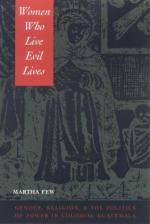|
This section contains 6,464 words (approx. 22 pages at 300 words per page) |

|
During the twentieth century a new gender discourse focusing mostly on women's roles and rights in Islam emerged in various parts of the Muslim world. As is the case in the West, this gender discussion is not uniform, and it is greatly influenced by local cultures and conditions. The division between men and women pervades Muslim culture from the teachings of the Qurʾān to its language of Arabic, which carefully distinguishes between male and female. Based on the assumed asymmetry between the sexes, gender discourse in Islam concerns itself mainly with issues of power and inequality caused by patriarchal hierarchies that over time were strengthened by the religious, social, and cultural environment. Only recently and in a few places (e.g., in the writings of the American scholar Scott Siraj al-Haqq Kugle [2003]) has gender discourse started to include marginalized women and men, such...
|
This section contains 6,464 words (approx. 22 pages at 300 words per page) |

|




